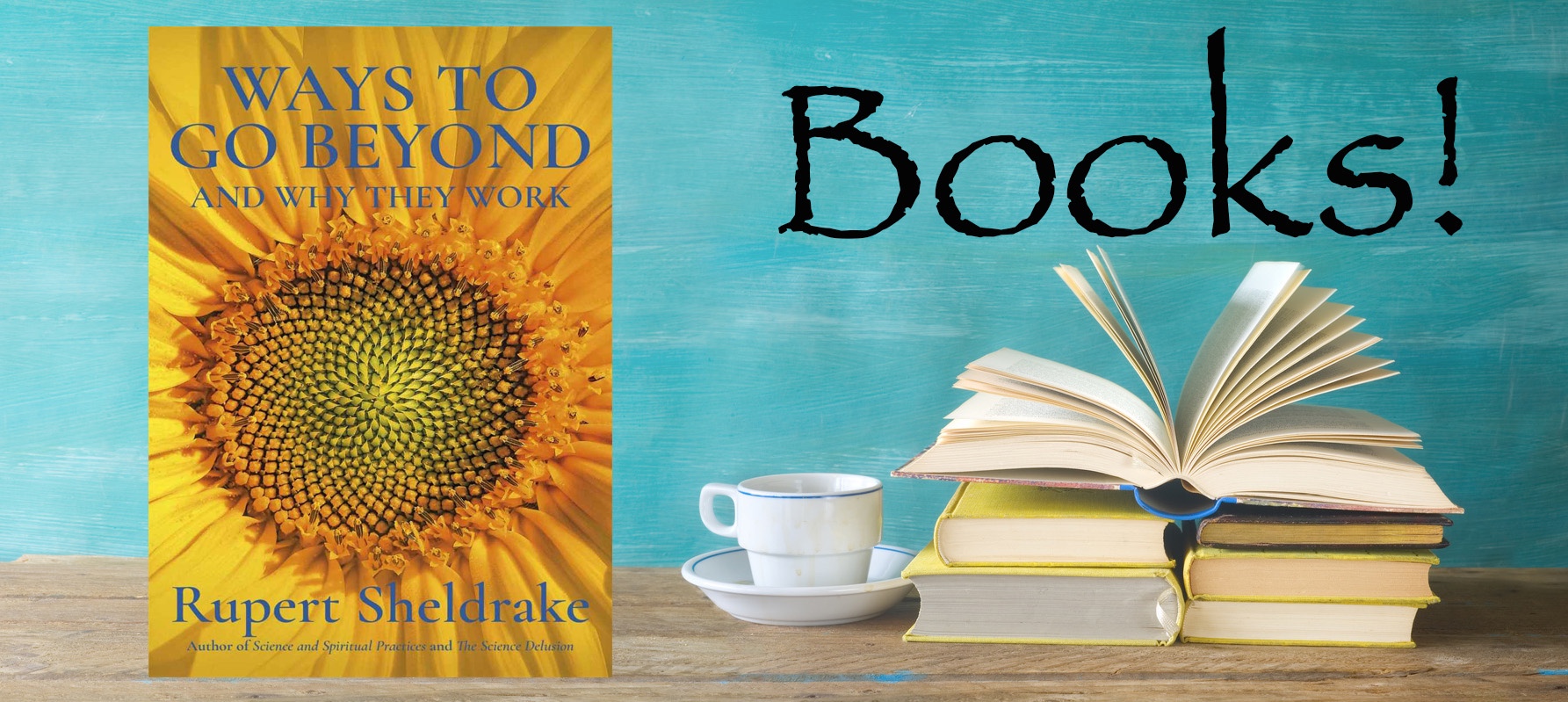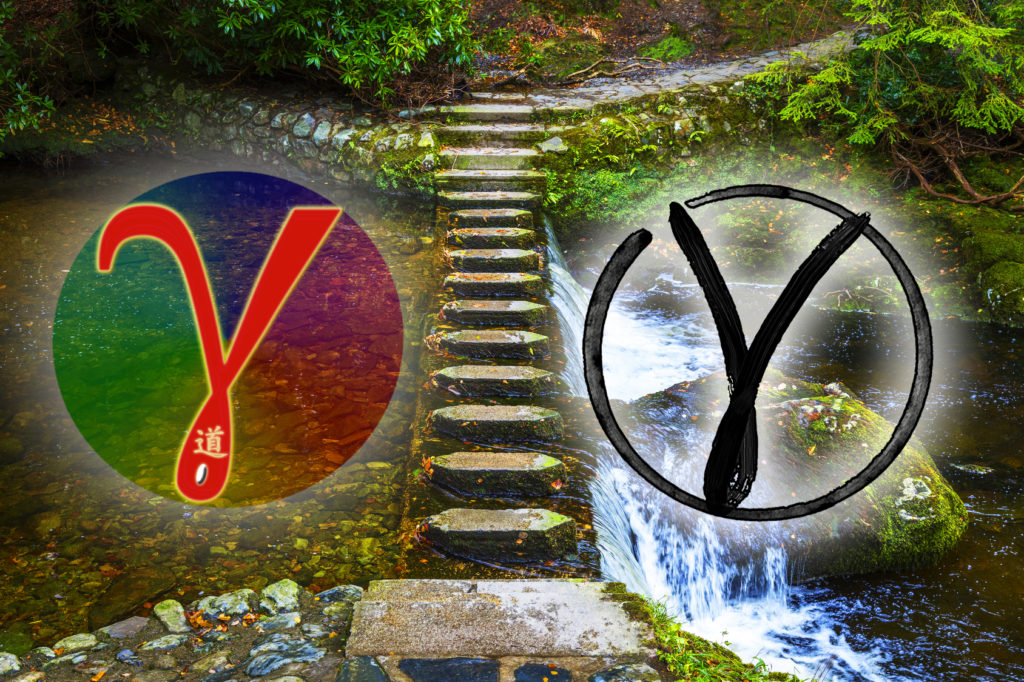
A few weeks ago Rupert Sheldrake’s new book Ways to Go Beyond and Why They Work saw the light. As soon as I saw the beautiful sunflower on the cover, I knew I had to order a hardcover edition of this sequel to Science and Spiritual Practices.
Is it pure coincidence that a book written in the same spirit as the Gamma Tao has a sunflower on its cover? Or is this symbolic telepathy? In the universe of Rupert Sheldrake this may even be a possibility.
Whatever it is, I do feel a special connection with Rupert Sheldrake. I have heard him speak on several occasions now. Last year I even briefly hold hands with him during a short group ritual before having cakes, tea and conversation together at the HowTheLightGetsIn Festival in Haye-on-Wye.
Such a spontaneous tea ritual is typical for the way Sheldrake approaches spiritual practices in his latest two books. According to Sheldrake spiritual practices have many positive effects that can be experienced by participants and validated by scientific research.
In Science and Spiritual Practices Sheldrake wrote:
“the old-fashioned opposition between science and religion is a false dichotomy. Open-minded scientific studies enhance our understanding of spiritual and religious practices.”
Our little tea ritual at the festival certainly brought about feelings of gratitude and instantly increased the bond between the participants.
A controversial scientist
In scientific circles Rupert Sheldrake is a controversial man. His theory of morphic resonance has often been dismissed as pseudoscience. His experiments on dogs that know when their owners are coming home, the sense of being stared at and telephone telepathy are seldom taken serious by other scientists. A few years back TED in a rare act of censorship banned his talk from its website.
In this talk and his book The Science Delusion Sheldrake argued that many things that are taken for granted in science can still be questioned. He challenged the scientific world to break out of its mechanical and materialistic paradigm. Science has brought us great technological progress, but in his eyes it has become a dogmatic “belief system” based on philosophical materialism.
There may be a great amount of speculation in the idea of morphogenetic fields or the possibility that the sun has a degree of consciousness, but when he poses “heretical” hypotheses like these, Sheldrake does so with carefully phrased arguments and always remains within the boundaries of free scientific enquiry.
It is impossible to say whether Sheldrake’s hypotheses are true or false, but his arguments often make sense. Consciousness remains a “hard problem” for modern science and the idea of panpsychism seems to gain some new grounds. I find debates on the relation between science and religion or the nature of consciousness always fascinating and listen to talks of opponents like Sam Harris and Daniel Dennett as well. I never feel angry or upset when my own world view is challenged. More than that, debates like these can lead me to an open-minded state of aporia.
Wisdom of spiritual practices
The Gamma Tao is agnostic about these things. As I wrote several times before, the Gamma Tao is not about the ultimate truth of reality, salvation or enlightenment. It is a basis for practical wisdom that works.
And that is exactly the reason why Ways to Go Beyond and Science and Spiritual Practices align so well with the spirit of the Gamma Tao. These two books show again and again how spiritual practices from all kinds of religious traditions can help us to increase our wisdom as human beings.
Sheldrake does not only show how they work, but as the subtitle of Ways to Go Beyond already suggests, he also sets out to explain Why They Work.
In Science and Spiritual Practices Sheldrake wrote chapters about: meditation; the flow of gratitude, reconnecting with the more-than-human world; relating to plants; rituals and their relation to the past; singing, chanting, and the power of music; and pilgrimage and holy places.
In Ways to go beyond he continues with: the spiritual side of sports; learning from animals; fasting; psychedelics; powers of prayer; holy days and festivals; and cultivating good habits and being kind.
All chapters end with a few suggestions on how to integrate these practices into our own lives.
Both books show that Rupert Sheldrake has a broad knowledge of both religious traditions and recent scientific developments. At the same time these two books are very personal. Sheldrake draws a lot on his own personal experiences. Some passages read like an autobiography.
The key word is connection. As Sheldrake writes in the last chapter of Science and Spiritual Practices:
“Connection is the theme that unifies them [the spiritual practices] all. They lead us beyond the mundane to deeper kinds of connection.”
The word religion itself also carries this idea of reconnecting (“re-ligare”). In this sense, you may say that all spiritual practices are essentially religious.
The chapters in Science and Spiritual Practices and Ways to Go Beyond show how each practice helps to establish new kinds of connection. This power to connect is the main reason why spiritual practices work and why they can help us to flourish like a sunflower.
